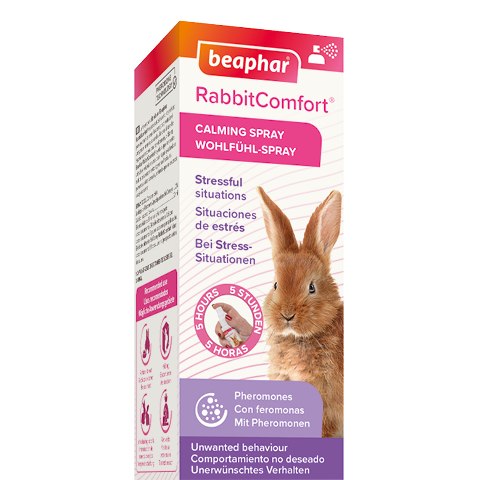Stress-free travel for cats, dogs and rabbits
Travelling in a car can be a particularly stressful experience for our pets. For some, the only time they go in the car is to visit the vet, cattery or kennel. These situations can be stressful in themselves, so it’s little wonder the sight of a carrier or dog seatbelt can cause some pets to panic.
All this stress and anxiety often makes the travelling experience worse for our pets. If your pet has a deep-seated fear of car travel, you will need to help them realise that travelling can be a good experience. To help, we’ve created a step-by-step guide so you and your pet can have a stress-free travel experience.
Getting Your Pet Comfortable with Car Journeys: Step-by-Step
Calming cats, dogs, or rabbits during a car journey can seem daunting at first, but there are some things you can do to help provide them with some extra comfort.
- Start by leaving your cat or rabbit’s carrier, or your dog’s crate or car harness and seatbelt in your home. For carriers and crates, you can place a favourite blanket in there. The familiar scent of you or their home will help them feel calmer and more relaxed. Allow your pet to investigate the carrier, crate or seatbelt and see it’s nothing to be scared of. We also recommend using a suitable Beaphar Comfort Calming product in the carrier, crate or dog car harness.
- After a few days, try offering your pet some food in their carrier or crate, but don’t shut the door, or whilst they’re wearing their car harness. This will allow them to start forming a positive association with being in there.
- Once your pet is willingly going into the carrier or crate, or wearing their harness, and they’re not showing any signs of stress, you can start to close the door, gradually building up the length of time they’re in there.
- Next, place your cat or rabbit in their carrier or your dog in their crate or seatbelt in a stationary car for around 10 minutes. Stay in the car with them and make sure there is ample ventilation. This will help your pet get used to being inside the car – repeat this step for 3–4 days.
- Once your pet is used to sitting in the stationary car, you can move on to turning on the engine. You may wish to leave the car running (but still stationary) so your pet can get used to the additional noise from the car before you move on to driving anywhere. Again, stay in the car with them and make sure there is ample ventilation.
- The next step is a short drive. For dogs, take them to a park or their favourite dog walking spot that isn’t too far. This will help them learn that car travel doesn’t always mean they’re going somewhere they don’t like, such as the vets.
Each step must be built up gradually, if at any point your pet begins to show signs of stress or travel sickness, simply go back to the previous step.
What Else Can I Do to Help My Pet Feel Less Anxious During Car Journeys?
Alongside introducing the process above, you could also consider using a calming product. These products help cats and dogs feel more relaxed, helping to reduce stress and anxiety. This in turn can help them feel more relaxed during a car journey.
Pheromone calming products, in particular, are ideal. This is because the synthetic pheromones mimic those naturally produced by the mother and trigger an instinctive calming response, helping form a positive connection with the space or event. They are also ideal to be used during the training steps above.
Beaphar Calming Solutions for Travelling Pets
Beaphar RabbitComfort®, Beaphar CaniComfort®, and Beaphar CatComfort® Calming Sprays are perfect for spraying inside carriers, crates and cars, and on dog seatbelts and/or blankets; they contain rabbit, dog, and cat pheromones, respectively. The spray is effective for up to five hours and is pocket-sized, so ideal for a quick visit to the vet or a long car journey to a holiday home. Apply the spray 15 minutes before fitting the car harness and seatbelt or placing the pet inside the car, crate or carrier.
For continued reassurance when visiting vets or during cattery/kennel stays, you could also use the Beaphar CatComfort® or CaniComfort® Calming Spot-On. Simply apply the spot-on to the top of your pet’s head between their ears. The pheromones will produce a calming effect after around 15 minutes that will travel with your pet for up to one week.
For dogs who are off on a kennel stay and require ongoing reassurance, the Beaphar CaniComfort® Calming Collar may be preferred. Available for adult dogs and puppies, the pheromones create a calming effect for up to four weeks.
A calming product will support cats and dogs with general travel anxiety, but for pets with a deeper travel sickness problem, you may need to consult a vet for further advice.
Cat Calming Spray for Travelling
Beaphar CatComfort® Calming Spray is a pocket-sized spray, perfect for use during travelling. It takes effect 15 minutes after application, and lasts for up to 5 hours per application.Signs of a stressed cat, dog, or rabbit
Some signs include scratching furniture, excessive meowing or barking, hiding or withdrawing, changes in eating, grooming and activity levels, or urine spraying.








